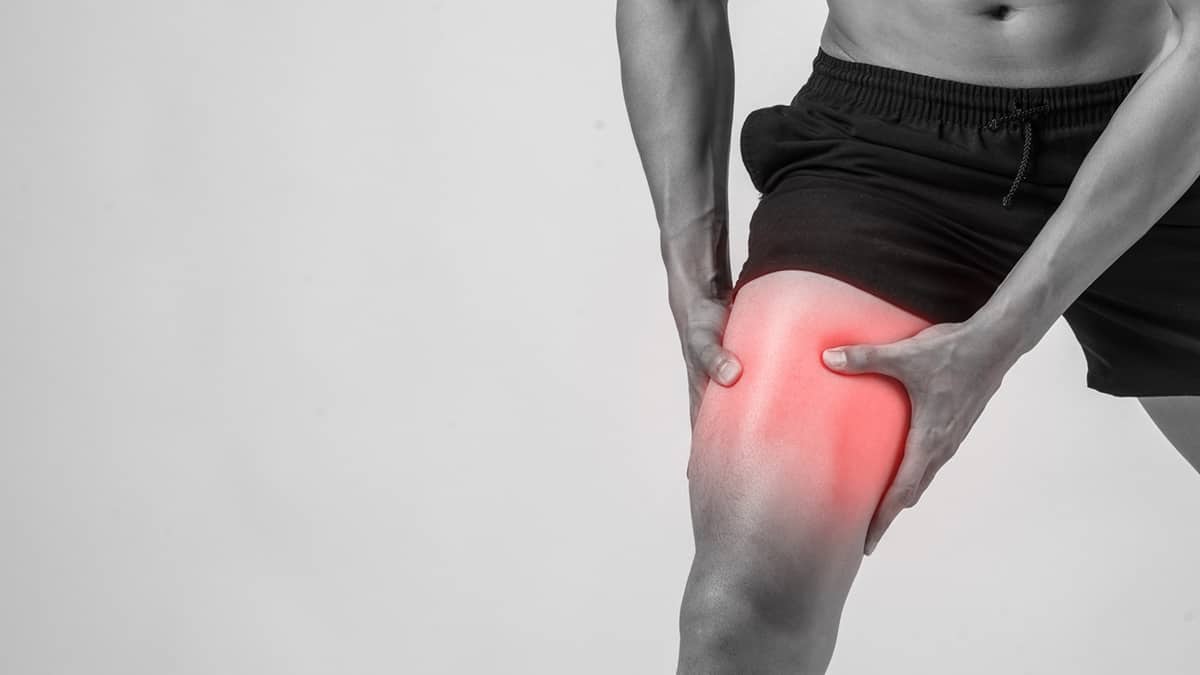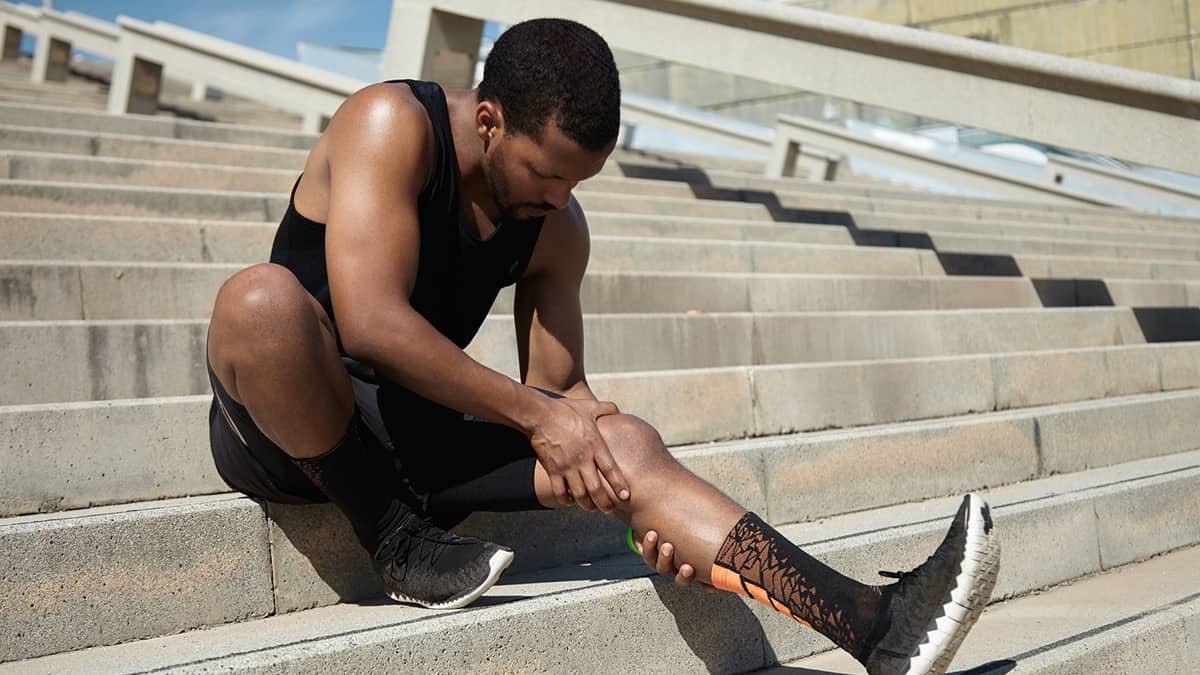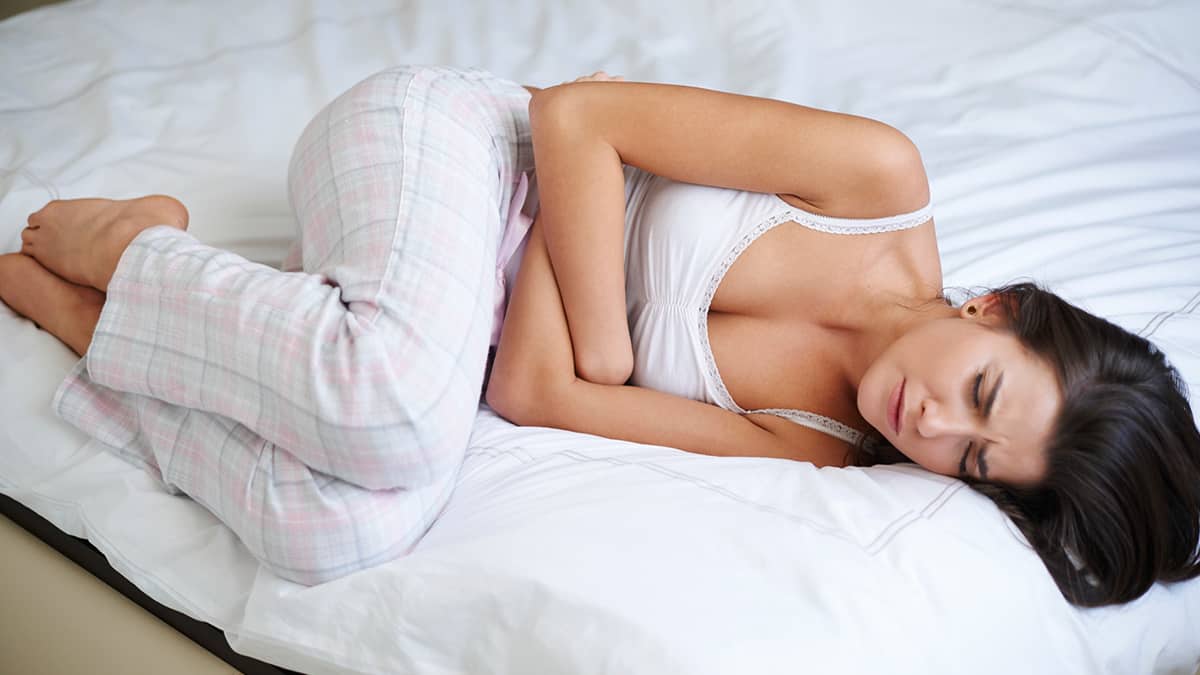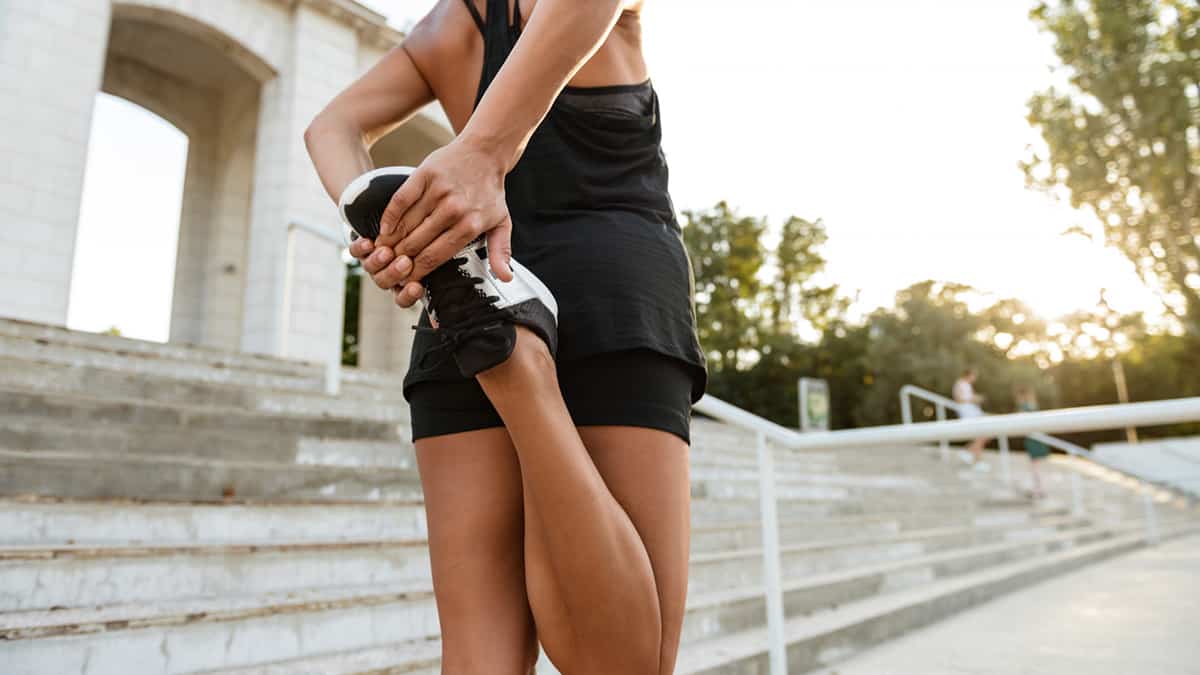Leg Cramps: What Causes Them and What to Do About Them
Physical Health

What Is a Leg Cramp?
A leg cramp, also called a charley horse, is a sudden pain in a leg muscle. Leg cramps often develop when a muscle becomes strained during activity or when a person is dehydrated. Less common causes include injury or an underlying condition. Fortunately, there are many things that you can do at home to help treat and prevent most cases of muscle cramps.
Leg cramps develop when there is a problem with one or more muscles in your leg. Muscles that are most often affected include the hamstrings (back of the upper leg), quadriceps or quads (front of the upper leg), or calf (back of the lower leg).
Muscles are made up of many small fibers. Nerves control groups of fibers, connecting muscles to the brain. When you “tell” a muscle to move, the muscle fibers contract — they become tighter, leading to movement.
Leg cramps occur when one of the muscles in the legs contracts suddenly, without you controlling it. Usually, you are able to relax a muscle after moving it, but during a cramp, the muscle stays tightened, and you can’t tell it to relax. Muscle cramps usually lead to pain. A cramp may go away after a couple of seconds, or it may linger for several minutes. In addition to your legs, muscle cramps also commonly appear in the arms, hands, feet, side of your chest, or abdomen.
What Causes Leg Cramps?
Many things can lead to cramping muscles. They may develop as a result of exercise or hydration habits, appear as a symptom of an underlying injury or condition, or occur as side effects of certain treatments.
Physical Activity and Leg Cramps

Most often, your leg is cramping because you overused a muscle. You may have strained or pulled one of your leg muscles while exercising or performing physical activity.
Cramping may be a sign that your body can’t keep up with the amount of physical activity you are trying to do. You may need to start using a less intense exercise routine, or taking more frequent breaks during bouts of physical activity.
How Water Affects Muscle Cramping
Dehydration is a very common cause of leg cramps. Dehydration develops when a person doesn’t drink enough water to replace all of the fluids that they lose.
Illness that leads to diarrhea or vomiting can lead to dehydration. The same is true for diseases that cause people to sweat or urinate too much, including kidney disease and diabetes. Both young children and older adults also have a higher risk of dehydration.
Getting a lot of physical activity or spending time in hot temperatures can easily lead to dehydration if a person isn’t drinking enough water. When people sweat a lot, and don’t replace the fluid they lose, they may end up with heat cramps.
Leg Cramps and Electrolyte Imbalances
Even if you’re drinking a lot of water, you may still experience cramping if you don’t get enough electrolytes. Electrolytes are minerals such as sodium, calcium, potassium, and magnesium. Electrolytes are found throughout your body, including in your muscles. They help control how much water enters and leaves different tissues. Electrolytes also help cells absorb nutrients and get rid of waste.
When the body’s fluid balance is thrown off, the levels of electrolytes can become abnormal as well. Dehydration can lead to low electrolyte levels in the muscles, which then make the muscles begin to hurt.
Leg Cramps as a Symptom of Other Conditions

Menstruation sometimes causes leg cramps. During a menstrual period, the muscles of the uterus contract in order to get rid of the uterine lining. This often leads to pain in the abdomen during a period. In some cases, pain can be felt in other parts of the body, such as the back or the legs. Pain during periods is normal for some people, but can also be a sign of a health condition. About half of women with endometriosis experience leg pain during periods.
Muscle cramps can also be a pregnancy symptom. Many pregnant women report cramps in their legs or feet, especially towards the end of the pregnancy. Leg cramps most often appear at night.
Sometimes, leg cramps may actually be a sign of injury in your back or neck. If you have a problem with your neck or spine, such as an injury or pinched nerve, the nerves that connect the brain to the legs may be affected. As a result, the nerve may make the muscle contract when it shouldn’t.
Several other disorders can cause muscle cramping. These include:
- Thyroid problems: The thyroid gland helps control many different processes within the body. About four out of five people with an underactive thyroid (hypothyroidism) have pain or weakness in the muscles.
- Nerve disorders: When there are problems with the nerves that control the muscles, a person may experience muscle cramps, pain, or twitching.
- Kidney disorders: More than one out of three people with kidney disease have ongoing muscle pain.
- Alcoholism: The more a person drinks alcohol, the more likely they are to have leg cramps, especially at night. Additionally, people with liver damage often have leg cramps.
- Diabetes: This disorder occurs when the body can’t properly regulate blood sugar levels. This can cause nerve damage, which may lead to leg cramps.
- Fibromyalgia: People with this disorder often experience muscle pain and stiffness in addition to tiredness, mood changes, memory problems, and insomnia.
Muscle cramps that happen often, don’t go away, or don’t have a clear cause may be a sign of these or other disorders. If your legs cramp frequently or happen along with other health changes, talk to your doctor.
Leg Cramps as a Treatment Side Effect
Certain drugs can cause leg cramps. These include certain diuretics (water pills), asthma medications, cholesterol medications, the high blood pressure medication nifedipine, and others. If you have recently changed which medications you take, or changed a medication dose, ask your doctor whether leg cramps are a possible side effect.
People with kidney failure often need to undergo dialysis treatments. During dialysis, waste and extra fluid is filtered out of the blood. Between 25 and 50% of people receiving dialysis have leg cramps.
Treating Leg Cramps
The most common causes of leg cramps can be treated at home. They usually don’t signal any major problem. However, in some cases, you may need medical care. Talk to your doctor if these strategies are ineffective at preventing or relieving your leg cramps.
Basic Home Care for Muscle Cramps

Cramping develops when a muscle contracts but doesn’t relax. One of the first things to try when you notice a leg cramp is to stretch the muscle. This may help loosen it. Don’t try to stretch too far or too fast, or you may risk injuring the muscle. Stretching before physical activity may also help prevent a leg cramp from forming. Additionally, some people tend to get leg cramps at night. If this is the case for you, stretch before going to bed. Massaging the muscle during or after stretching may also help.
To stretch your legs, try the following after consulting your physician to ensure they are appropriate for you. Hold each stretch for about 15 seconds:
- Hamstring stretch: Stand with your feet shoulder-width apart. Bend forward and try to touch your toes, although it’s okay if you can’t reach them. Don’t lock your knees — bend them slightly. You should feel a light pulling in the backs of your thighs.
- Quadriceps or thigh stretch: Hold on to a wall, chair, or other sturdy object for balance. Stand on your left leg, bending your right knee. Reach down with your right hand to grab your right foot. Pull gently, stretching your foot straight up towards your back. You should feel this stretch in the front part of your thigh. Make sure to stretch both legs.
- Inner thigh stretch: Stand with your legs a couple of feet apart. Bend your left knee and shift your hips to the left. You should feel a slight pulling in your right inner thigh. Next, stretch the left side by bending your right knee and moving your hips to the right.
- Calf stretch: Stand a couple of feet from a wall, and place both hands on the wall. Bend your left knee, placing your left foot on the ground near the wall. Move your body forward, towards the wall, while keeping your right knee straight and your right toes and heel planted on the ground. You should feel the stretch in the back of your right leg, below the knee. Repeat on the other side.
You can also use temperature to your advantage to help relieve a leg cramp. Putting a heating pad or hot water bottle on the affected area can help loosen a muscle. Once the muscle is relaxed, try numbing pain with an ice pack.
Hydrate Yourself

The amount of water needed each day varies a lot from person to person, depending on things like age, sex, activity levels, climate, and health conditions. However, leg cramps may be a sign you’re not drinking enough. Try carrying around a water bottle with you during the day, or switching out other beverages for water during mealtimes. Children, older adults, and lower-income people are less likely to get enough water.
If you develop leg cramps after working outside or undergoing a lot of physical activity, you may be experiencing heat cramps or heat exhaustion. Start rehydrating yourself and eat a snack. Your cramps should start getting better within an hour. If they don’t, seek medical care. Additionally, get medical treatment if you have signs of heat exhaustion such as heavy sweating, cool skin, dizziness, a fast heartbeat, or confusion.
Get More Electrolytes
If you currently have cramps, it may be better to hydrate with a beverage that contains electrolytes. One study found that drinking water after an intense workout actually increased the chances that a person developed cramps. However, when dehydrated people drank electrolytes after finishing a workout, muscle cramps became less likely.
To prevent future leg cramps due to dehydration, make sure to properly fuel your body and drink enough fluids before being active or spending time in hot temperatures. Sports drinks that contain both carbohydrates and electrolytes can help. In one small study, people who had a sports drink before and during physical activity were able to exercise for more than twice as long before developing leg cramps.
In addition to using sports drinks when you are physically active, you can also try getting more electrolytes through your diet. Try eating more foods that contain these important minerals:
- Potassium: leafy greens like spinach or Swiss chard, sweet potatoes, clams, yogurt, bananas, orange juice, and coconut water
- Calcium: dairy foods such as milk, yogurt, and cheese, as well as leafy green vegetables, tofu, sardines, and salmon
- Magnesium: nuts, seeds, beans, leafy green vegetables, and whole grains
Medication for Leg Cramps
Pain from basic leg cramps can often be relieved with over-the-counter medications. A good option to try is non-steroidal anti-inflammatory drugs (NSAIDs) like ibuprofen or high-dose aspirin. In more severe cases cases, doctors may be able to prescribe medication such as muscle relaxers to help with cramped muscles.
NSAIDs may also help when leg cramps are caused by a menstrual period. Additionally, taking an oral contraceptive (birth control pill) can reduce menstruation symptoms including pain.
Other Treatments for Leg Cramps
If leg cramps are caused by an underlying health condition, treating that condition may help this symptom improve. Additionally, if cramping is caused by a medication, you may be able to talk to your doctor about switching to a new treatment plan.
In some cases, leg cramps occur because a health condition or treatment prevents enough blood from getting to the leg muscles. Massage can help stimulate blood flow, causing people to have fewer leg cramps.
When To Get Medical Help
Talk to your doctor if your legs cramp frequently and don’t go away after trying home remedies. You should also talk to a doctor if your cramps lead to severe pain or don’t disappear after a few minutes. Additionally, if leg cramps appear along with other symptoms like weakness, redness, swelling, or warmth, they may be a sign of something more serious.
Conclusion
Leg cramps can have many causes. However, most often cramping is simply a sign that you need to take it easier or drink more water. Stretching out the cramped muscle, grabbing a sports drink, and taking an NSAID are strategies that can help in the moment while the muscle is cramping.
If these simple treatments don’t work, leg cramps may be a sign that something else is going on. It may be time for a conversation with your doctor. Most causes of leg cramps can be managed with proper treatment, once you have a better understanding of the cause.